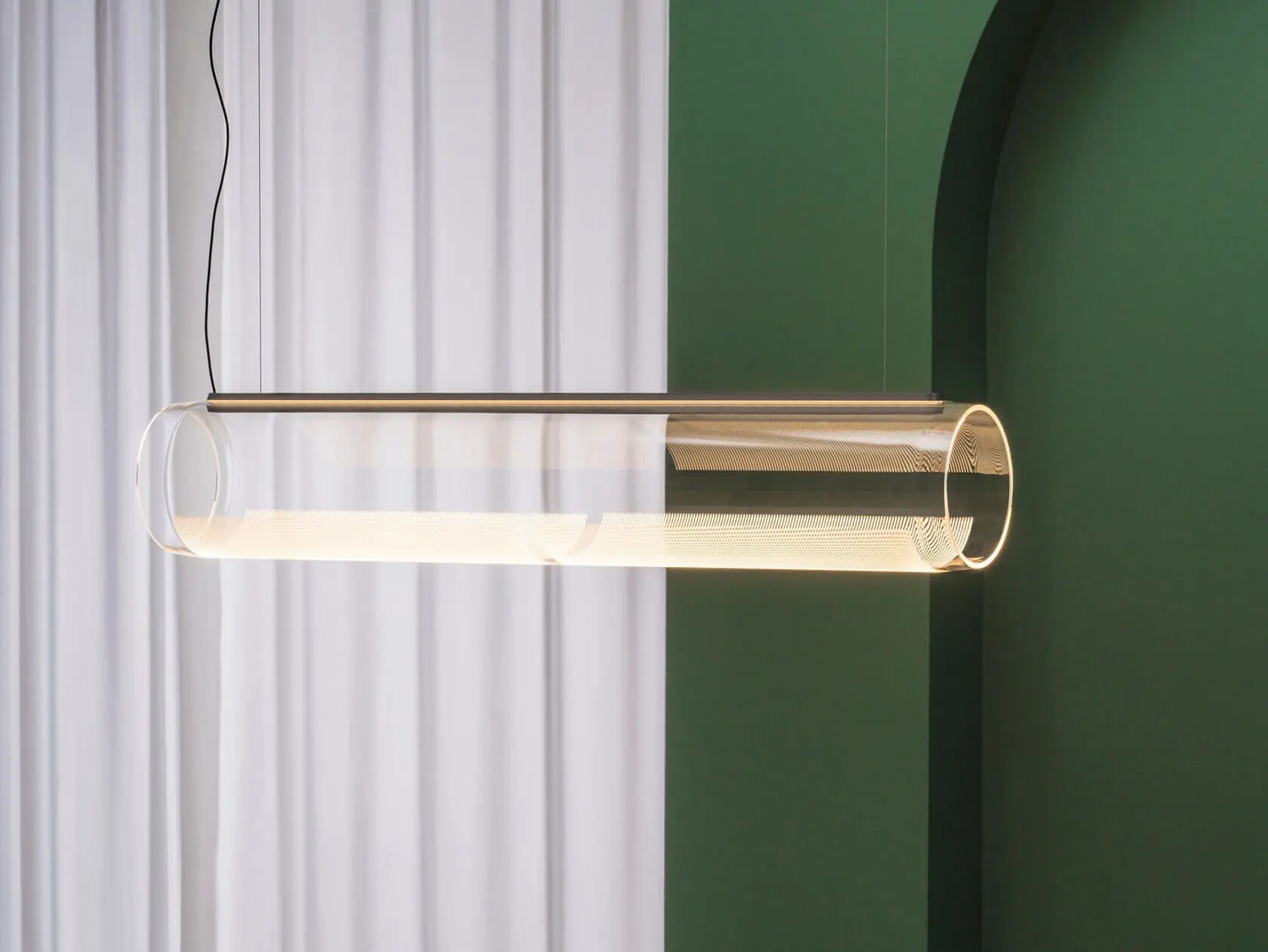What is Machine Glass Blowing?
Glassmaking is an ancient art that technology has transformed to create products on a mass scale. Heard of machine-blown glass, but want to know more?

Glassblowing, since ancient times, has been known as the art of manipulating molten glass. Machine glass blowing has the same definition, but instead of requiring someone to master the art, a machine does it instead.
But what exactly does this process entail? And how, as a designer, architect, or artist, can it help you? Is it sustainable? What are the dangers? And what should you know about it?
This guide is a useful starting point for you to find out…

Machine Glass Blowing: what is it?
From gathering the molten glass from the furnace to the blowing of the final piece, machine-blown glass is exactly as it sounds: machines mimic the movements and methods of a hand blower.
Glass blowing uses a high-temperature furnace to transform glass and other materials into art pieces or scientific glassware.
What type of glass can be machine-blown?
Well of course, the process uses glass but only in the later stage of moulding.
Before that, the product’s raw materials must be mixed to create molten glass.
The most common types used today are lead crystal and soda lime glass.
Lead crystal (most commonly used for blowing) is made from a mix of silica sand, 24% lead oxide, small amounts of chemicals like potash, and cullet (crushed waste glass).
Soda lime glass is made from sand and soda lime and is the most common kind of household glassware found today.
In its molten state glass is extremely malleable; when cool it’s very hard and brittle, but also very hard-wearing.

What can I use machine blown glass for?
The fact is, although recent developments in the automated production of glass have broadened possibility, it still lends itself to simpler designs.
This manufacturing process is great if mass-producing standard glasses, whether they be wine, beer, or shot glasses.

Give me a step-by-step
The process uses a machine that automatizes the glass manufacturing, differing depending on the machine and the desired product.
It always begins, however, with the raw materials being automatically mixed (sand, silica, limestone, soda ash, and chemicals for colouring).
These raw materials are then fed into a furnace where they are super-heated and fused to create molten.
This molten glass (or ‘gobs’ as it is also known) is then poured into different machines designed for the particular method being employed.
The process is dictated by a series of spindles that work in pairs, first gathering the material by vacuum into blank moulds before exchanging the blank glass between one another.
A combination of spinning and air being blown into the parison gives the glass its profile and distribution.
Curious to know more about design processes to use in your next design? Don’t miss What is cold forming? Let us tell you…

The moulded glass is then taken by the spindle and transferred to a stemming machine.
This machine reheats and stretches the neck to the required specifications.
Then the almost finished glass moves to the burn-off stage where oxygen-powered gas flames remove the waste glass also referred to as ‘moil’.
Finally, the finished product is left to cool down and harden.
Including the obvious risks that come with extreme heat, there are several hazards someone embarking on any type of glass blowing should consider but with proper preparation, these risks can be reduced.
Although massively reduced compared to manual glass blowing, heating glass and quartz still produces harmful fumes that can cause respiratory hazards.
Certain measures like proper air ventilation, respirators, and a canopy-style hood can minimise this risk but do not protect against all fine and inhalation hazards.
Can I do it at home?
It’s because of these hazards that it is not recommended to replicate machine glass blowing processes at home.
It is possible to replicate manual glass blowing by creating a home studio but it is extremely expensive.

What are the pros & cons in machine blown glass?
As opposed to hand-blown glass, which is more appropriate for small production runs, the main benefit of machine-blown glass is that it can produce items in volume.
In some respects, it can also be less expensive as it doesn’t require any manual labour.
On the other hand, the mould cost of machine-blown glass can be quite costly.
Where hand-blown glass only needs one or two moulds, machine-made glassware requires some 10-18 moulds during bulk production.
This also impacts the aesthetic result as multiple moulds make it difficult to create a seamless product, which is more easily achievable with hand blowing.
This means joints are more likely to be visible.
Still, depending on the desired outcome, the fact that machine-blown glass production creates more identical pieces is also a good thing.
Unless you want to create something with a unique character and handmade feel, employing automated processes enable automatic detection and the necessary corrections in order to avoid repeated defaults, making the entire process smoother if you lack experience in glass-blowing production.
Are there any other methods similar to it?
When it comes to similar methods, glass blowing is unique in its ability.
Both machine blowing and hand blowing are considered some of the best options when manufacturing glass vessels.
Virtually all other techniques of glass-making like core-forming were known in antiquity and are now long outdated.

Is this a sustainable process?
This one depends on how you look at it.
Glass is 100% recyclable and does not experience any loss of quality through the process.
It is sustainable from its origin to its demise and is composed of only natural resources, from abundant natural raw materials, such as sand.
However, it also consumes hefty amounts of natural gas and propane while filling the air literally with tons of carbon dioxide.

I want to know more!
There are several resources that are useful when it comes to building your knowledge around machine glass blowing. If you want to learn more check these out:
- History of glass manufacturing
- An Oscar-winning short documentary on glassmaking (1959) by Bert Haanstra
- A report on the future of glass-forming by WRAP
- A glassmaking terminology dictionary by The Corning Museum of Glass
- A guide to home glass blowing by Working the Flame

Interested to know more about the glass blowing world? Don’t miss 4 reasons to watch “blown away” Netflix series.






